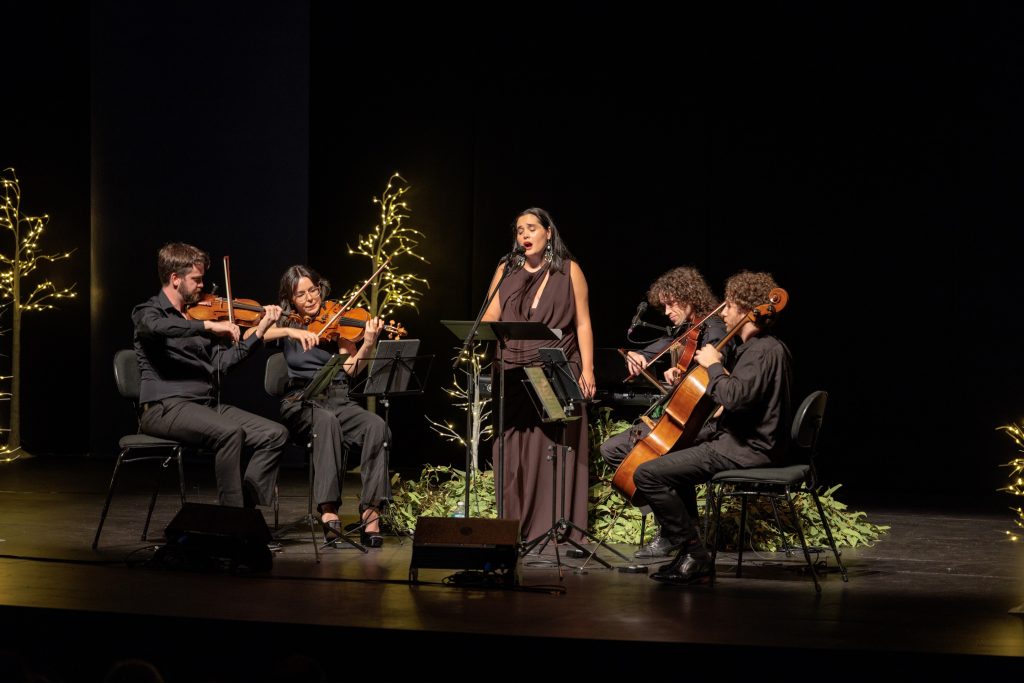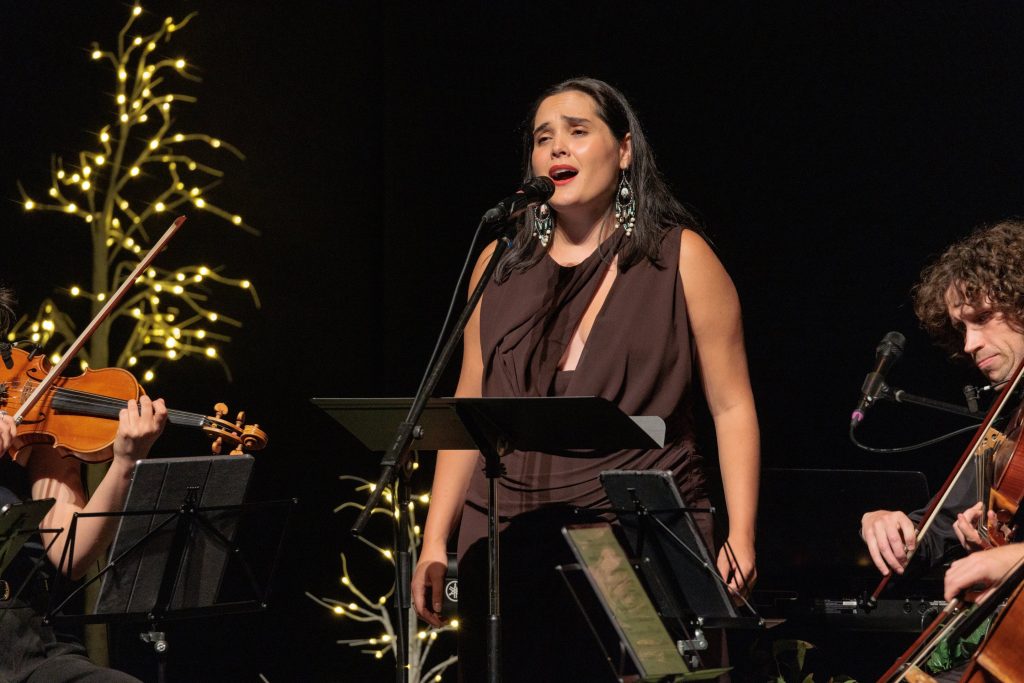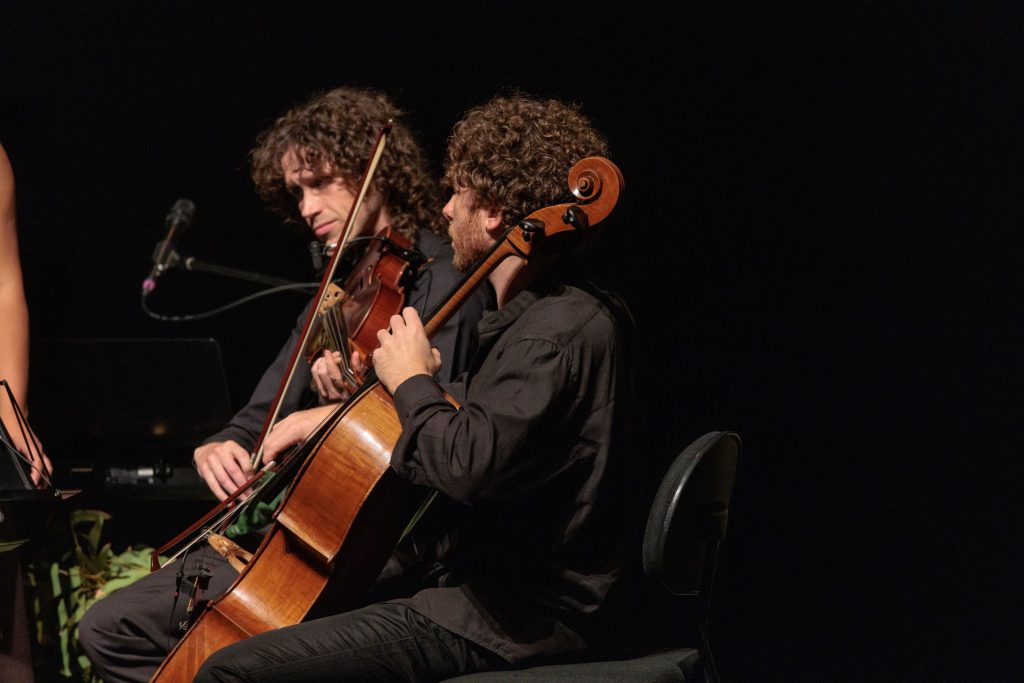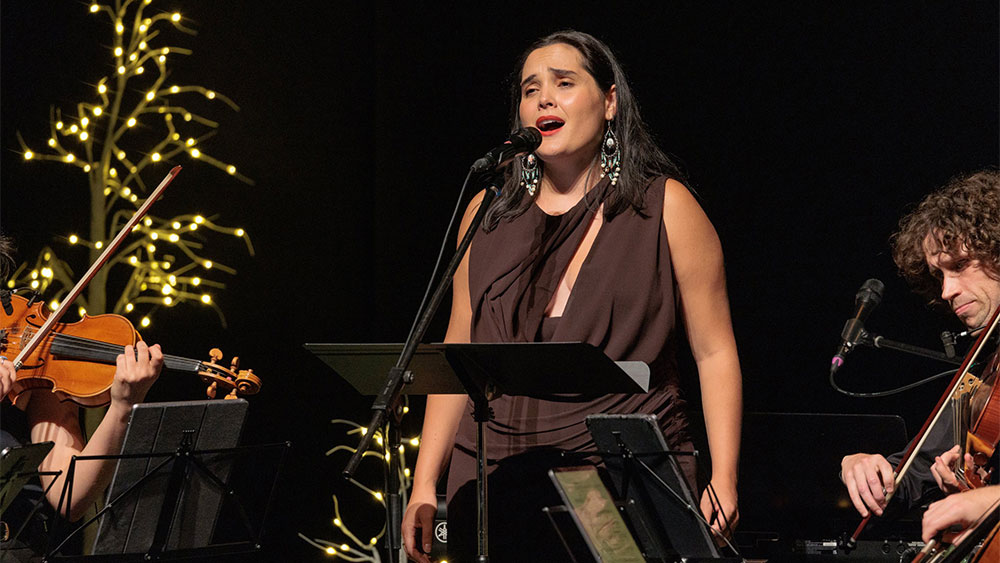
Review: Jess Hitchcock and the Penny Quartet at His Majesty’s Theatre
Jess Hitchcock and the Penny Quartet at His Majesty’s Theatre
Wednesday, February 26, 2025
Through her extraordinary voice, Jess Hitchcock is an artist who spans both the classical and popular realms. As a mezzo-soprano she performs opera, but as a singer/songwriter her preferred idiom is Country & Western. Her Musica Viva/Perth Festival performance with Penny Quartet at The Maj on Wednesday night combined the best of both of these worlds.
The concept for the collaboration came from Musica Viva’s artistic director, Paul Kildea. Crucially, Kildea added a third ingredient into the mix—or rather, eleven further ingredients. Instead of the songwriter and quartet working up the arrangements themselves, he invited some of Australia’s finest composers to select a song from Hitchcock’s first two albums and create their own version for voice and string quartet. This masterstroke took the collaboration to a whole new level.
There is a rich tradition in classical music of composers incorporating folk songs into their broader orchestral compositions. Antonin Dvořák, Gustav Mahler, Percy Grainger, and Benjamin Britten all explored this within their artistic oeuvre.
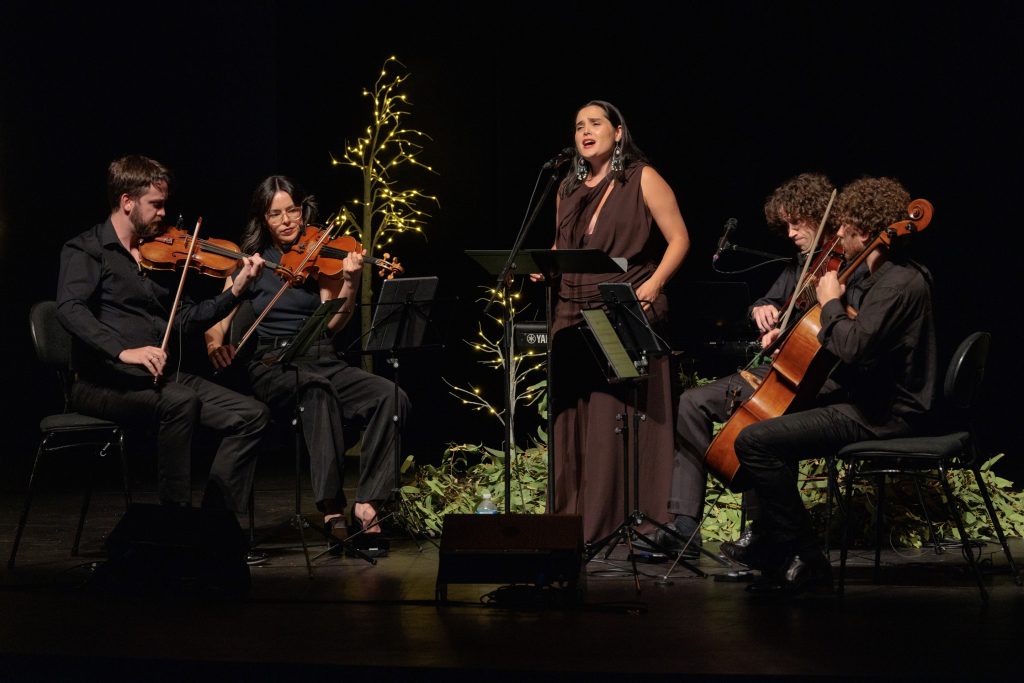
To appreciate the implication of such genre-bending for the Hitchcock/Penny Quartet, it is handy to reflect on a key difference between Country & Western and Classical music. (Don’t worry; this won’t be too technical.)
Like folk music, Country & Western is essentially based on chords. Songwriters typically compose on an acoustic guitar or piano, and their compositions are usually straightforward chordal progressions, either strummed, picked or depressed. Rhythm is key while the melody, often carried by voice alone, is laid over the top.
A typical C&W arrangement—bass, drums, rhythm, and lead—develops directly from the chords, with the melody enhancing the primary progression. The bass picks the root note of each chord and maps the movement from one to the next. The drums follow the rhythm of the strum. The lead line enhances the main melody while the lead break often provides a counter melody. It is an integrated, tight, and relatively simple structure—at least in its essential format.
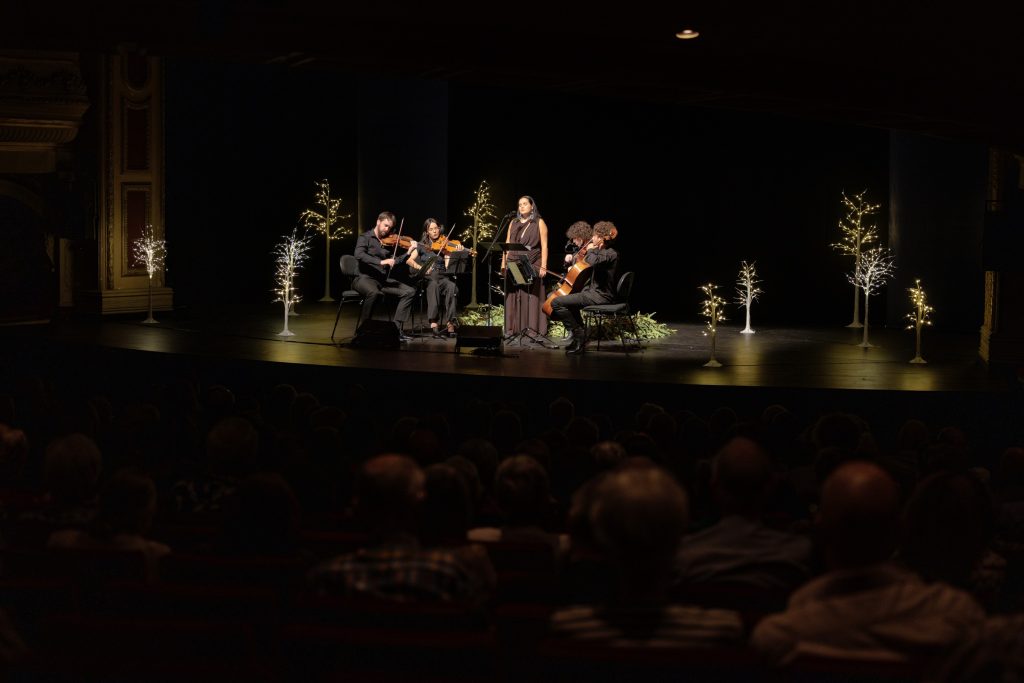
Classical music works on a completely different premise. Although chords are still present, they are not typically focused on any one instrument. Instead, they are built by a range of instruments playing individual, harmonising notes. This is vastly more complex, as it allows each instrument to go off on its own melodic direction while still harmonising together as a whole. This results in a more harmonically dense and melodically rich composition.
Typically, in pop/classical collaborations, the classical ensemble and pop band play together. As such, the chords are still carried by the guitar or piano, and the classical ensemble tends to merely embellish the sound by either deepening the chords or enhancing the melody. (This approach is often referred to as ‘Mantovani Strings’.)
But engage a composer, get rid of the primary chordal instrument, and you end up with something else altogether. The composer/arranger can pull the harmonic structure apart and reconfigure it as a classical composition. Instead of sitting atop a chord progression, the sung melody becomes one of the many lines within a rich melodic mix, albeit still the ‘defining’ one.
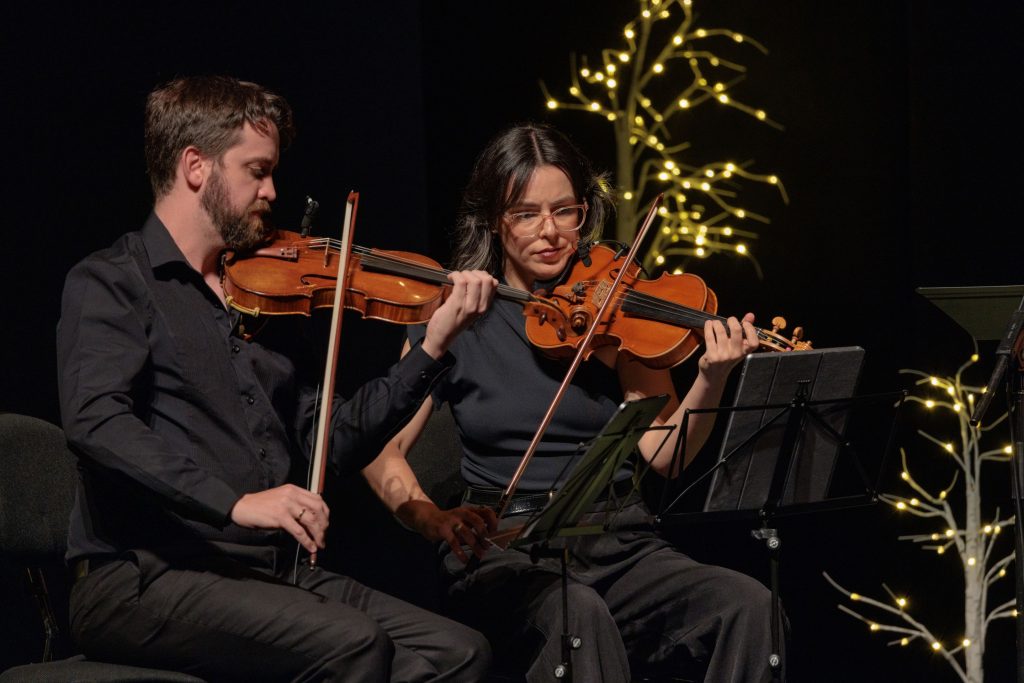
This is vastly more interesting and satisfying to the ear. Hence why the engagement of eleven classical composers in the Hitchcock/Penny Quartet show was so clever. In effect, there were two concerts in one: a high-quality classical performance and a rollicking country and western show. It was brilliant—highly effective and very entertaining.
To deepen the impact, some songs in the program were grouped into thematic units—love, living by the ocean, and growing up. Here, songs were paired together and bridged by an instrumental interlude. In these passages, Penny Quartet let rip, taking off on complex, haunting, and at times atonal classical sequences. This lifted the show into another realm.
Even so, for all its beauty and complexity, there was a downside to this process. The words.
When listening to music, most people find it impossible to focus on both the lyric content and the music at the same time. The sense of the words is subsumed by the sensation of the sound, or vice versa, depending on where you focus your attention. It’s a rare being who can give equal weight to both in the one listening. Usually the music wins out, and you only get what a song is ‘about’ when you read the lyric sheet afterwards or, once you know it by heart, ‘reflect on it in tranquillity,’ as the old saying goes.
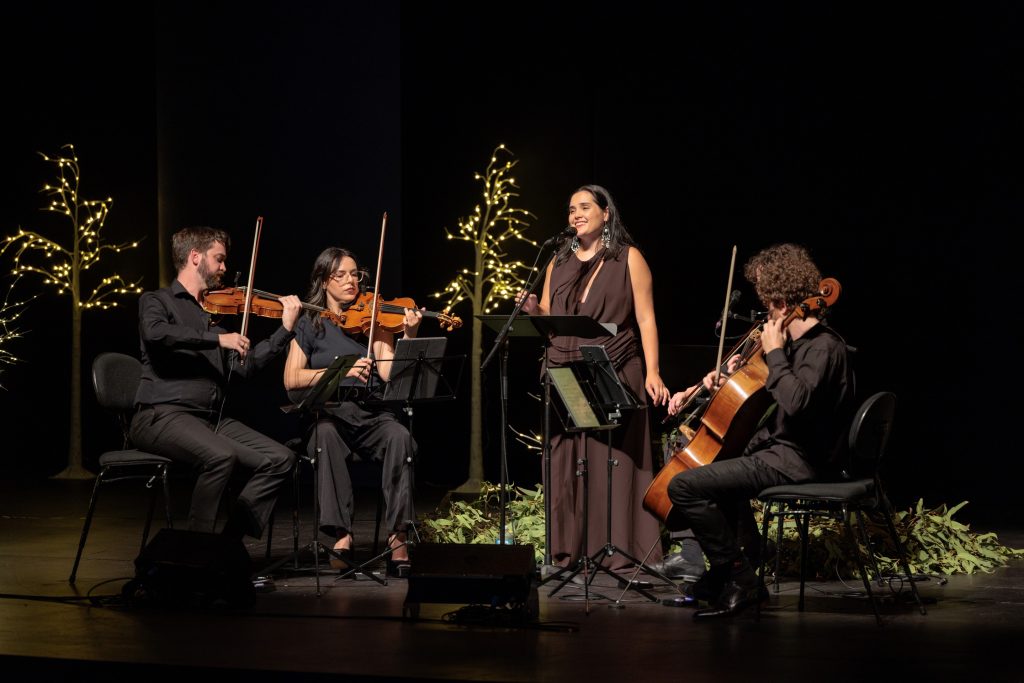
This becomes even more difficult when, as in this show, there are so many musical elements working together.
This problem is further complicated by the fact that most singers focus on the vowels, not the consonants. Although this allows them to soar and swoop in the creation of gloriously sustained melody lines, it reduces words to sounds, not particles in a sentence. Again, it is easier for the listener to go with the sound and abandon the meaning. (Conversely, this is also part of the reason why lousy singers often make better poets or at least more meaningful singer/songwriters.)
This was especially a pity in this show, as Hitchcock is a poetic lyricist who tackles serious themes. Her subjects range from the personal and introspective, as in Homeward Bound and Unbreakable, to the socio-political, as in Together, written while campaigning for the Voice referendum. Her words are simple and direct yet complex in their nuance. (Thoughtfully, Musica Viva provided a separate book of lyrics to accompany the program brochure.)
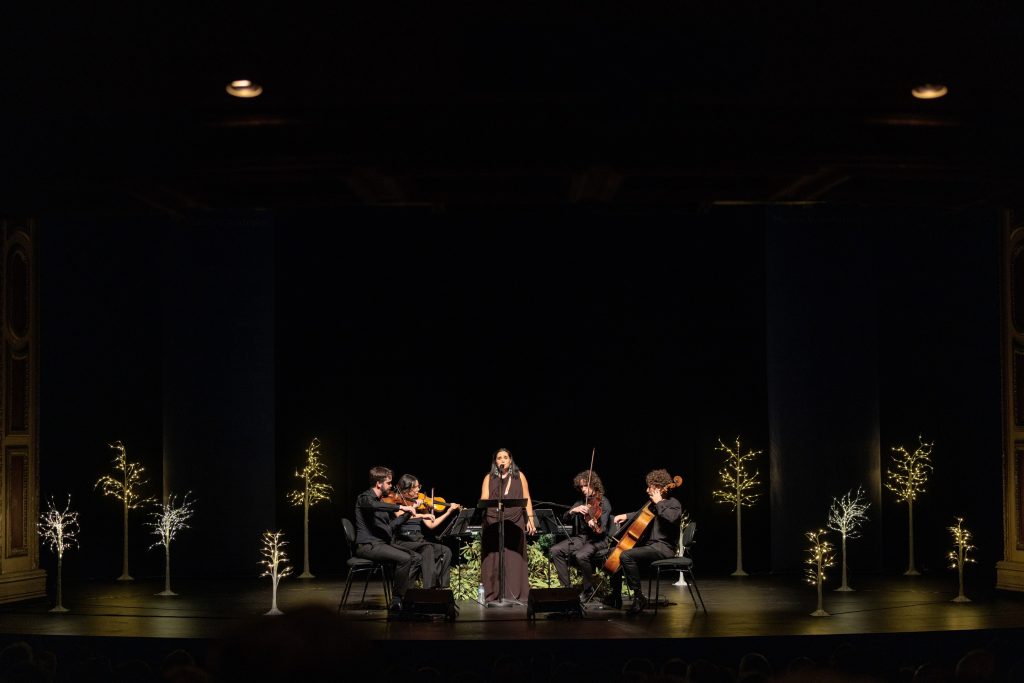
With such diverse musical talents, it’s little wonder that Jess Hitchcock has had such an impact on the Australian music scene, both in her own right and through her collaborations with Paul Kelly, Archie Roach, Tina Arena and Kate Miller-Heidke. Her last appearance at The Maj was in the Gina Williams/Guy Ghouse indigenous opera, Wundug Wer Wilura, for the 2024 Perth Festival. (After Melbourne, Hitchcock now regards Perth as her second home.)
Similarly, Penny Quartet has built a solid reputation in Australian chamber music circles. Since its formation in 2014, the ensemble has been nominated for numerous awards, toured extensively around Australia, held residences at prestigious music festivals, performed in America, and collaborated and recorded with many musicians and composers. Their love of the established string quartet canon is balanced by a passion for exploring new musical territories. The latter was strongly displayed in this performance.
The show ran for ninety minutes and ended with Iain Grandage’s superb arrangement of the evening’s one cover song: Sir Philip Sidney’s My True Love Hath My Heart. It was apt that Perth Festival’s former Artistic Director should have a hand in the rich and glorious end to such a fantastic night of music.
Bravo!
IAN LILBURNE
Photos by Artshoot Media



